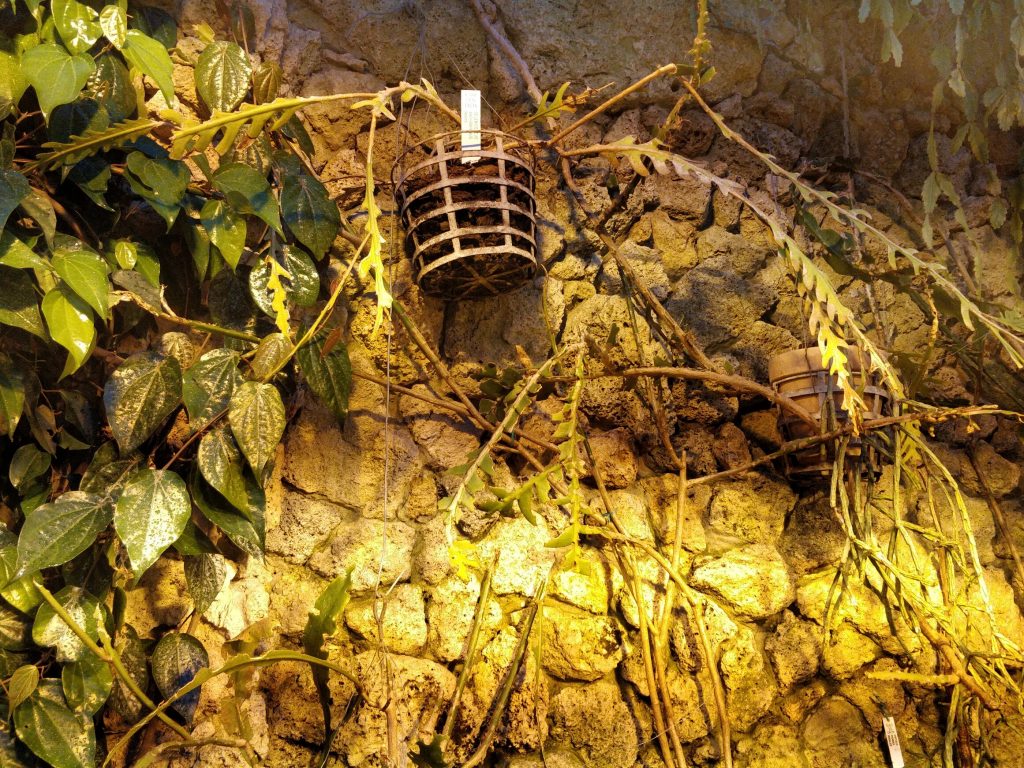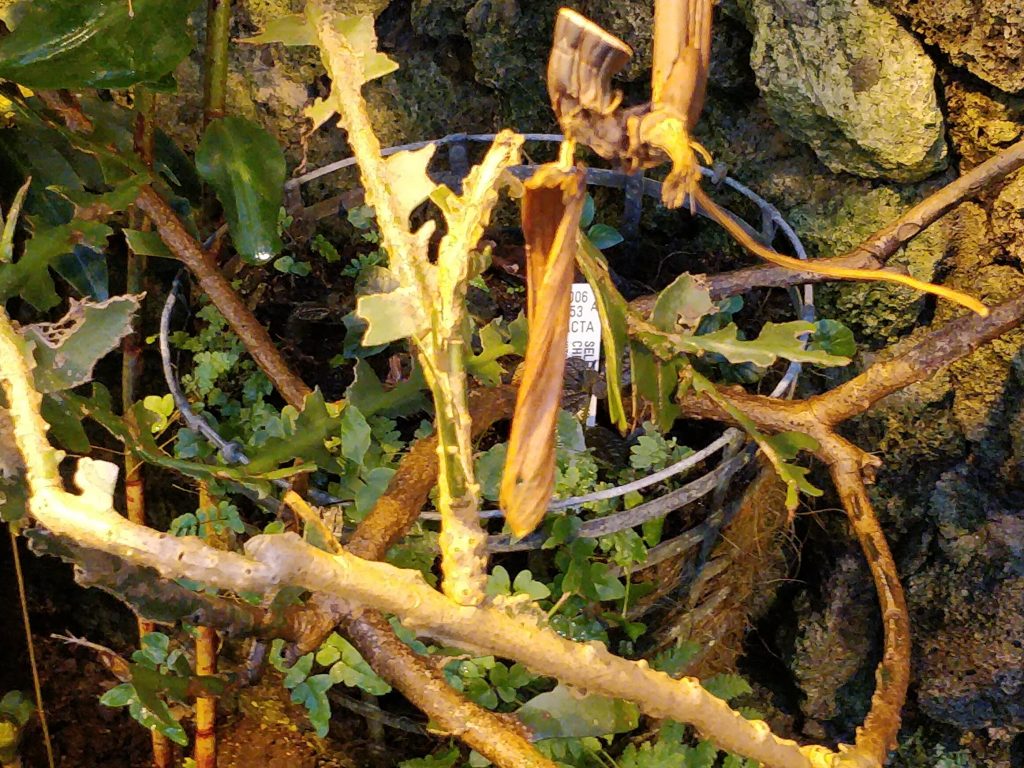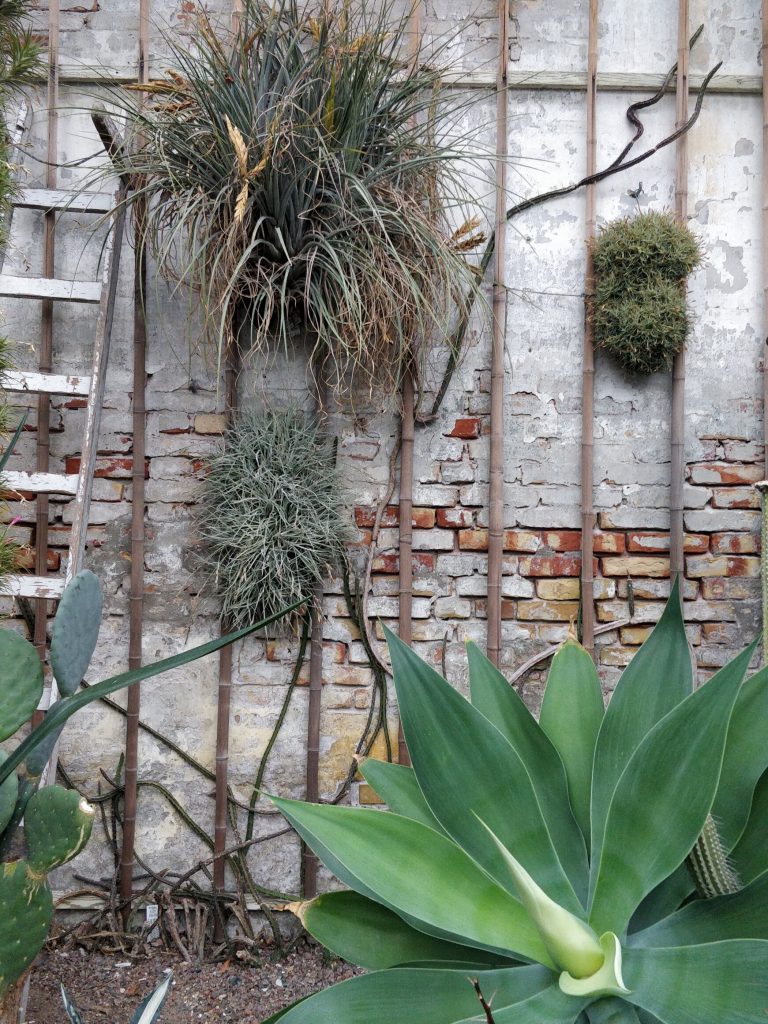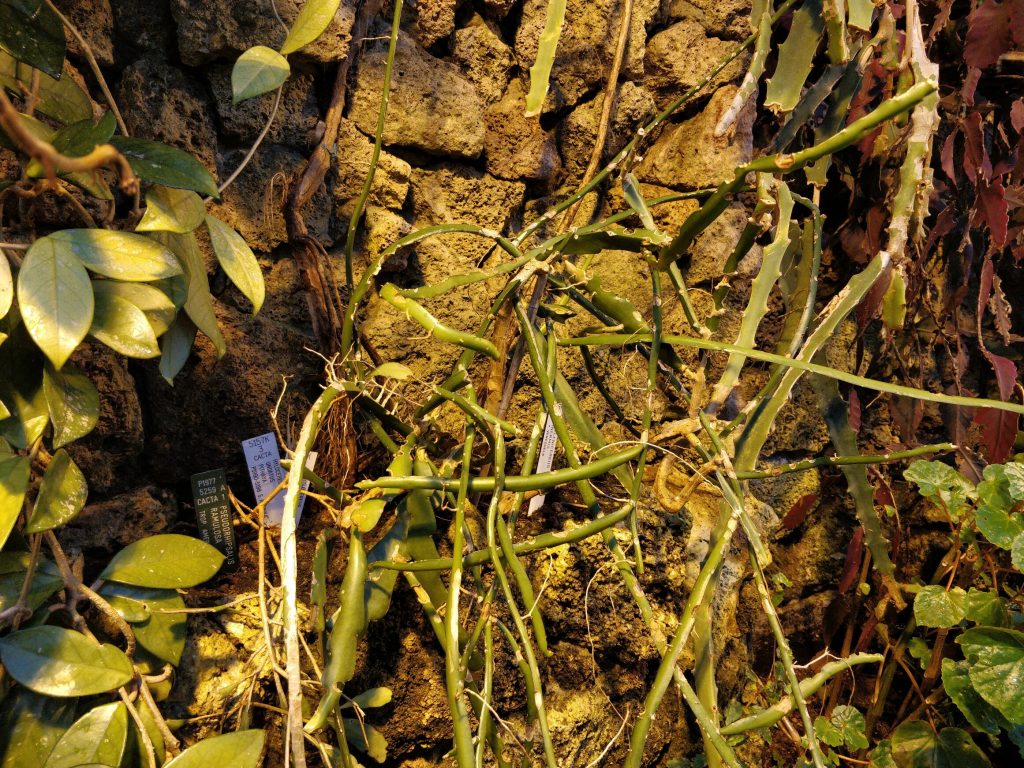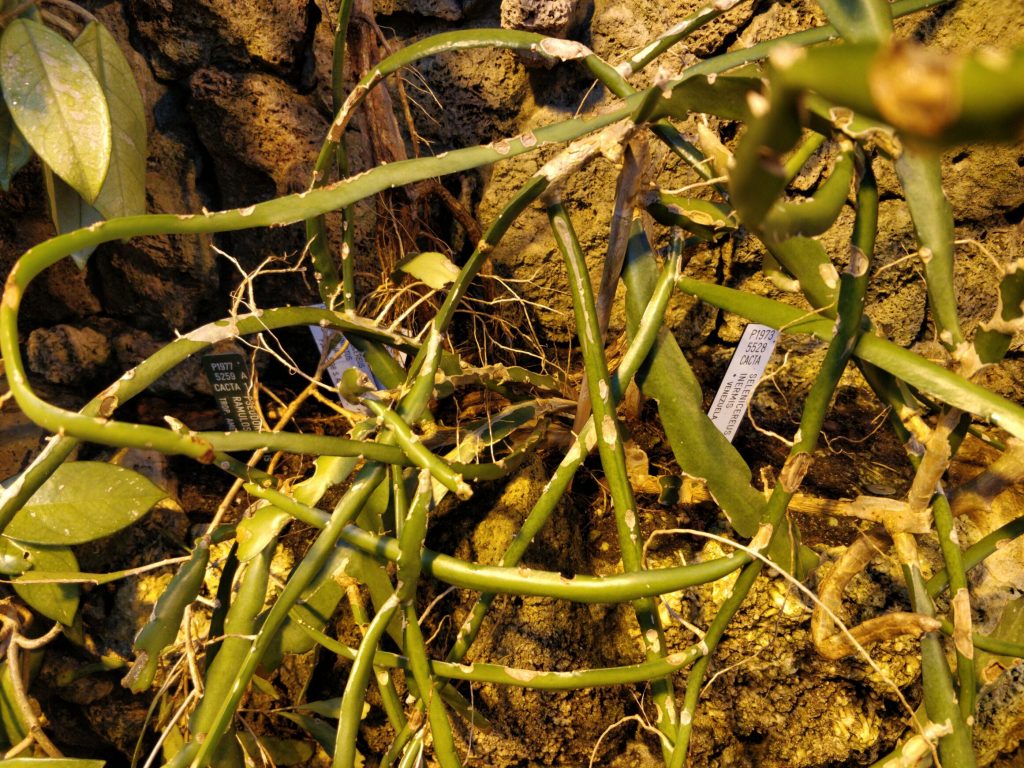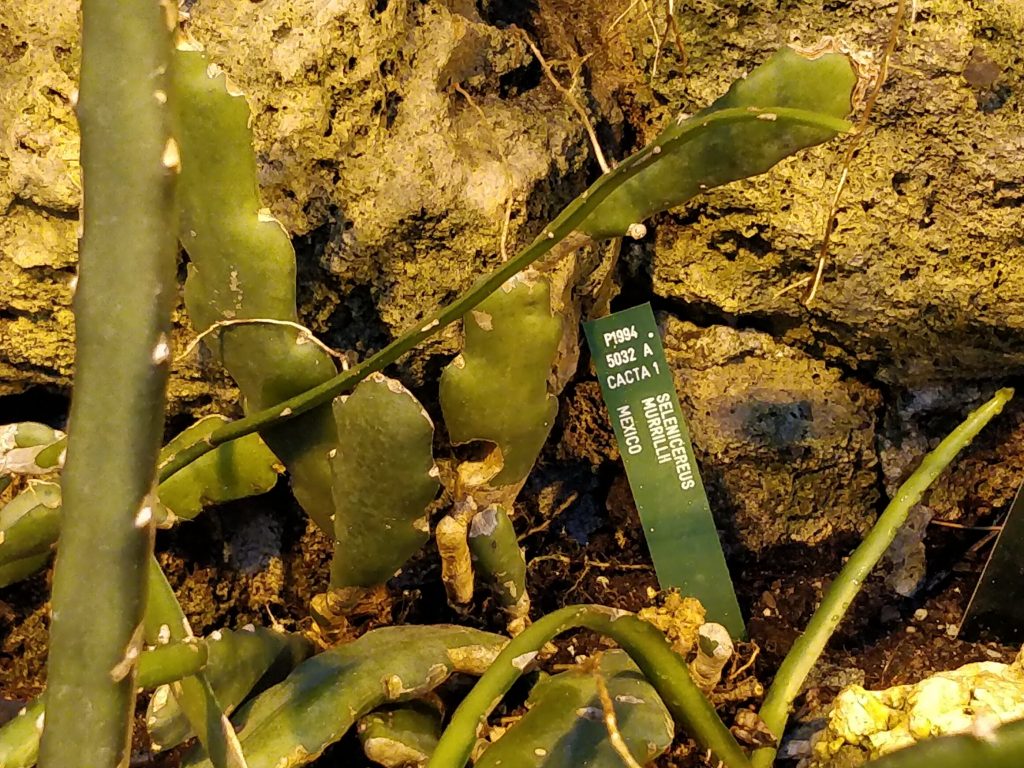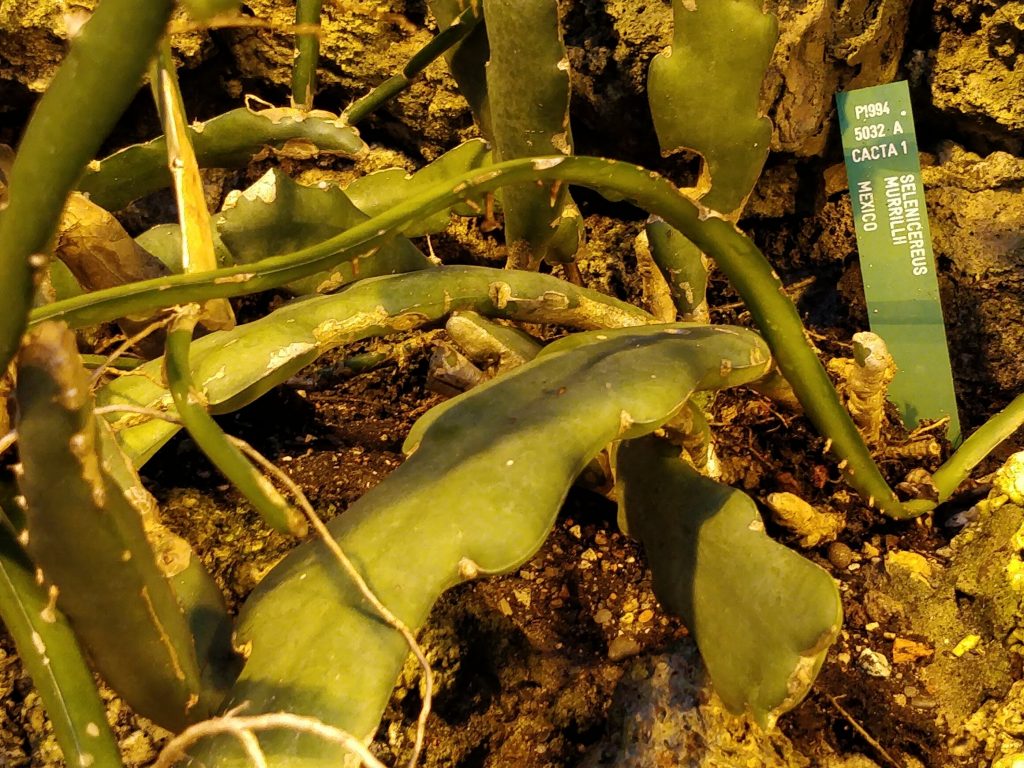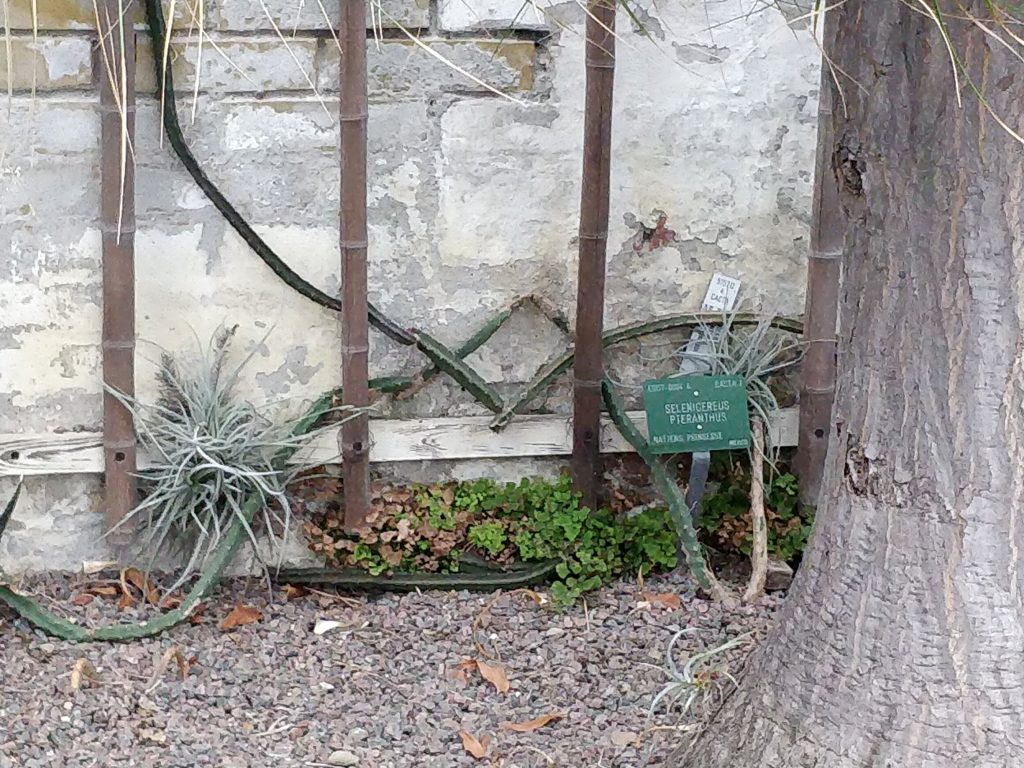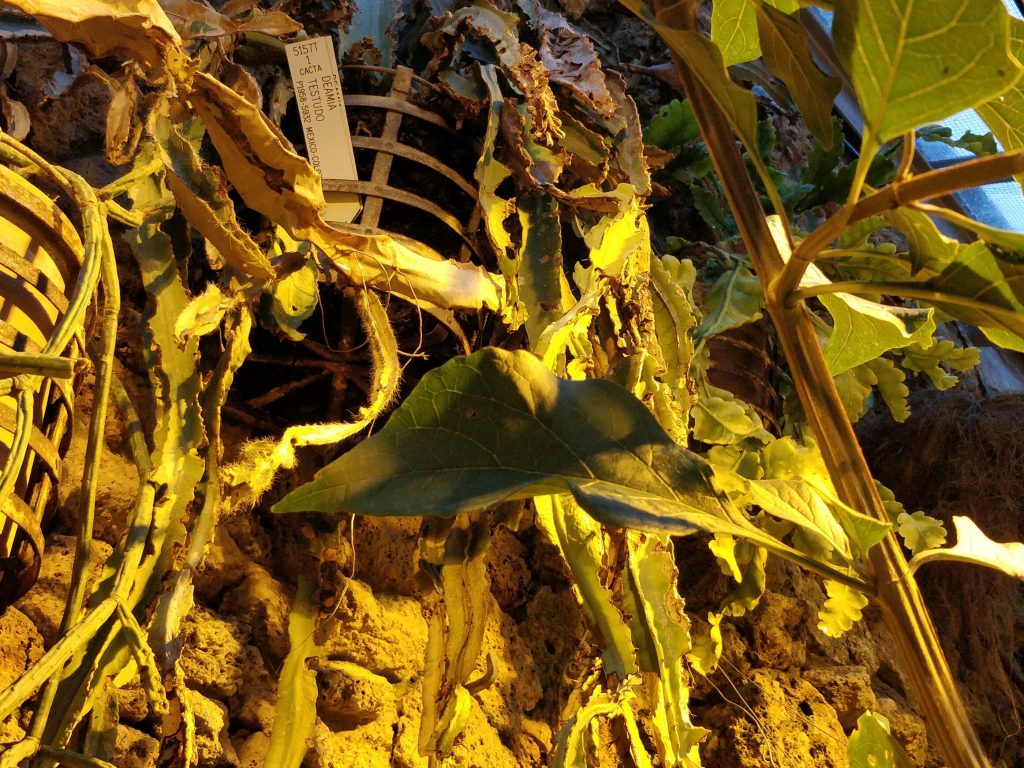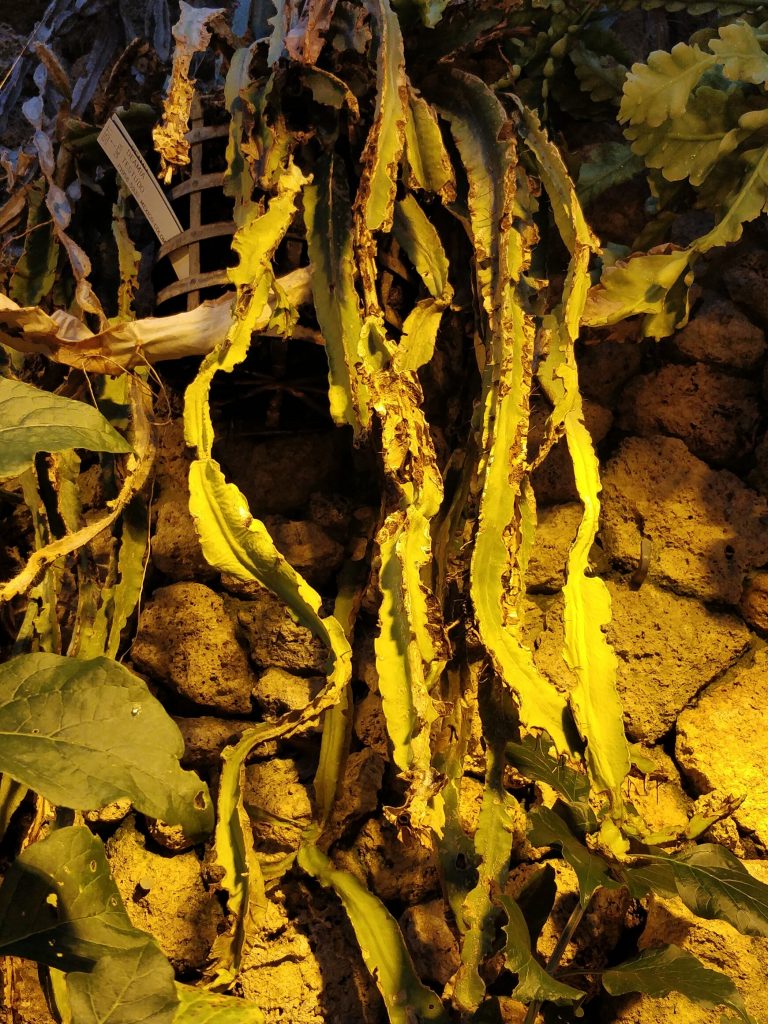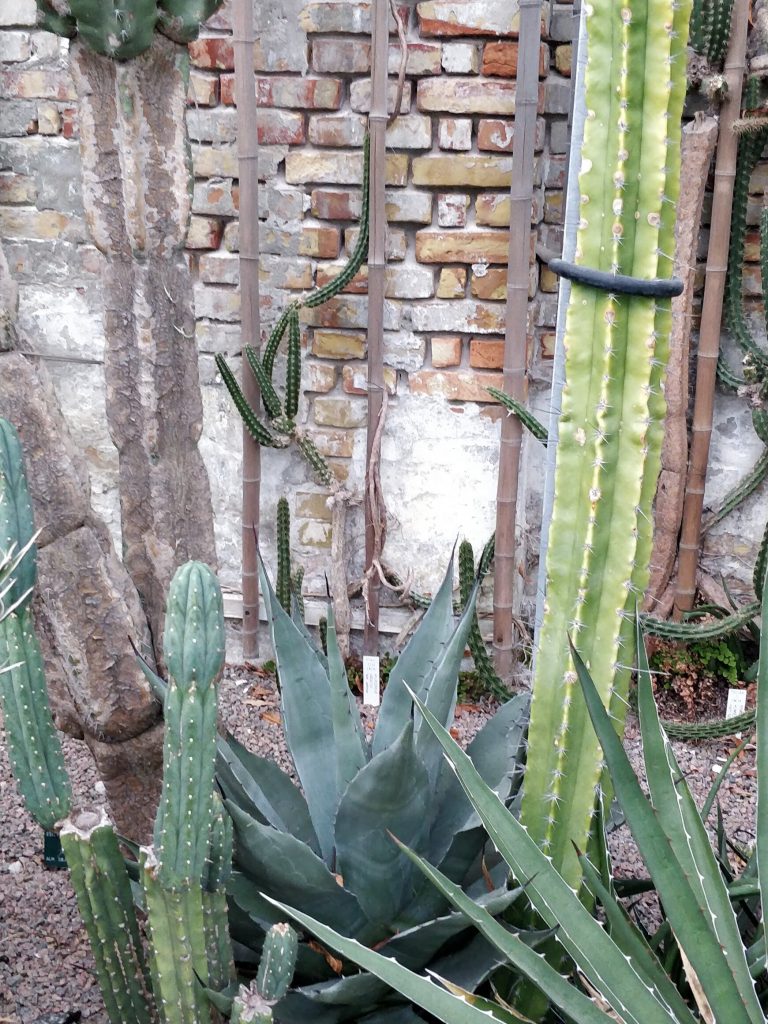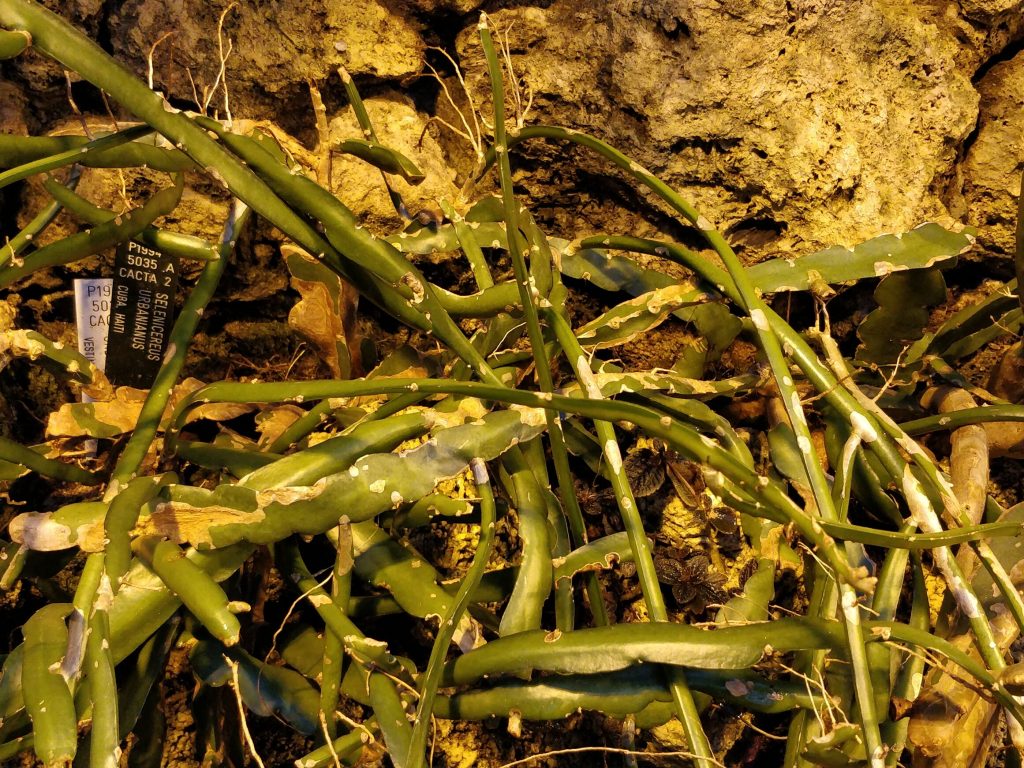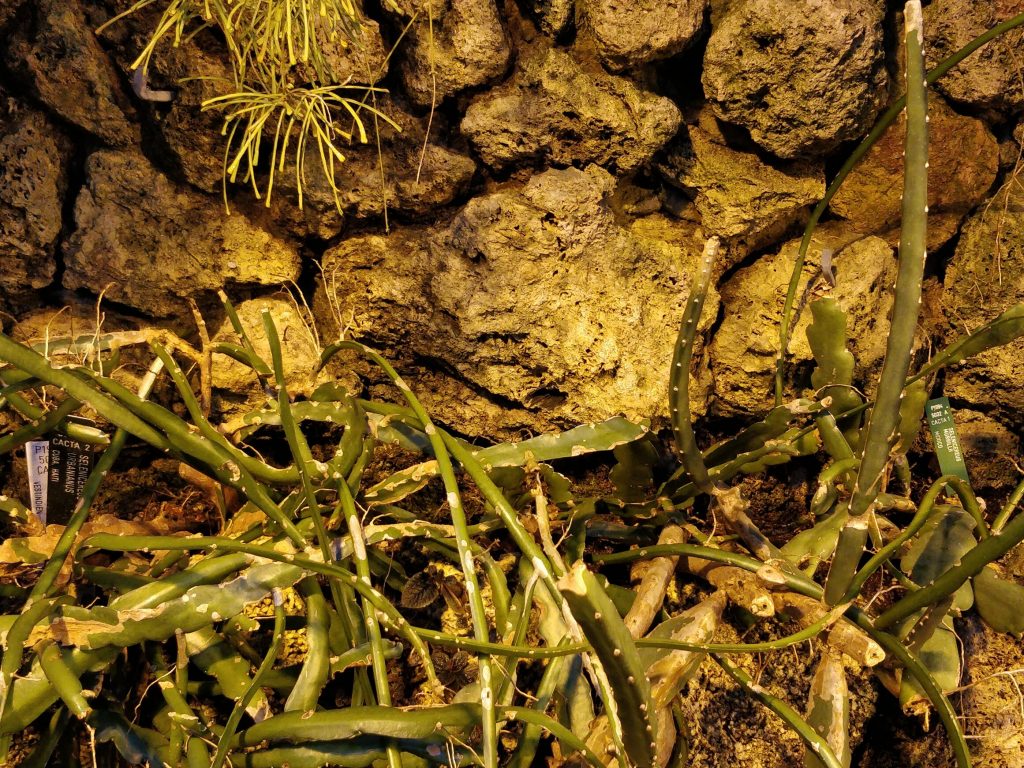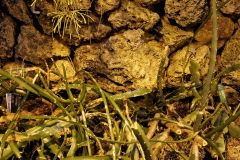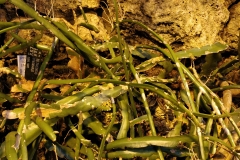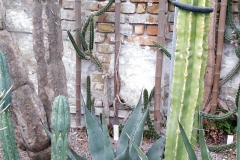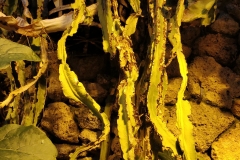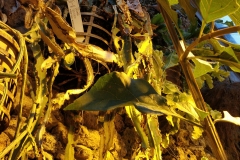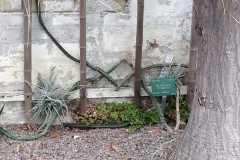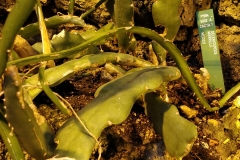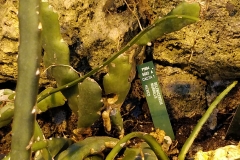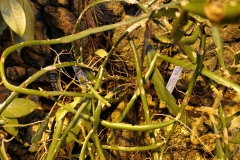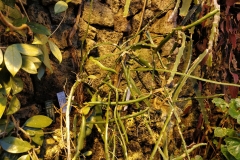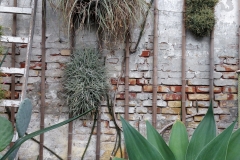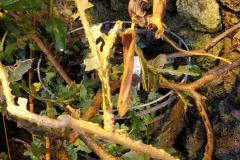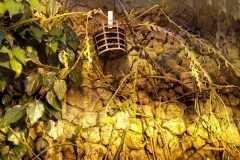The Botanical Garden in Copenhagen has a number of Selenicereus, Hylocereus and Deamia* in the two greenhouses to either side of the main stairs that lead up to the biggest house, the Palmhouse.
(The stairs unfortunately are closed as the garden, under pressure by government budget cuts, has introduced entry fees to the greenhouses.)
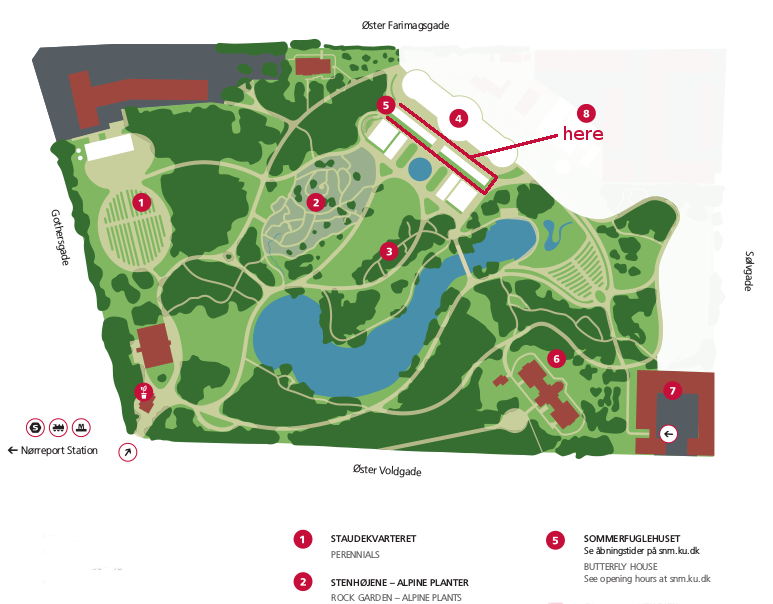
Some of these plants can be difficult to spot, as they are mainly growing up the back wall of the greenhouses, difficult to get close to – and their name plates are partly hidden.
Some of the plants look severely beaten up – or eaten up? Might it be the butterflies that inhabit the house (note that is is actually called “Butterfly House” on the map these days -..) and are said to eat cacti leaves?
* There is an ongoing scientific debate about the genera Selenicereus, Hylocerus, Strophocactus and Deamia. Recent studies suggest to unite the first two in one Genus, Selenicereus, and re-establish Deamia as an independent Genus. See for example the work of Noemi Tel-Zur and Korotkova et al.
For the sake of this gallery, we will avoid the question by listing the species, without its genus, e.g. just “undatus” or “grandiflorus”. Complete the name as you please!
